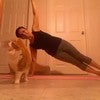Description
About This Video
Transcript
Read Full Transcript
Hello, thank you for joining me in this practice. This practice will be about the back body. So the back body is always there, and we can't really see it that much. We look in the mirror to see it or we can feel is with our hands, but it's very important to be aware of it because we can't perceive a lot from it, from the back body. We're kind of, we might be wary of danger that's behind us all the time because we don't have eyes behind our heads.
So this practice is aiming on relaxing your back body and also making it more, making you more aware of it. So sensation-wise, becoming more aware of what's happening behind you so that you can let go of habitual tensions when you don't really need them, and then getting tense when you do need them, because we might need to do like, run, or do things at one point in our lives. But for the most of it, there's no need for this extra tension that you might be carrying. Okay. So we won't need any props for this.
We just need your mat and your attention. We'll start by lying down on the mat all the way. And just exposing our back body to the air and to the ceiling. And I want you to just lie down. Bring your head down, and just feel the ground underneath you.
Take a breath. As you exhale, just become a little wider on the ground. And slowly, start reaching your arms forward one by one. And as your reach your arm forward, you can feel already the back of your body engaging and making this happen. And slowly move side to side.
And just becoming aware of more of your back. It can be your upper back in the beginning and the back of your neck. And you're kind of using your muscles to lift yourself up a little bit. And maybe your can start rocking your pelvis from side to side. But just take your time.
And if you feel closing your eyes is better for you, go ahead and do that. And you can use your hands, and you can use your, like the side of your body. You're also massaging your back. But at the same time, you're using the movements to become more aware of what's happening and bringing all of your attention on your back. And then maybe even start using your legs a little bit and it might look like a shalabasana at one point, but it doesn't have to be one.
And you feel like you're gonna get so, when the movement gets, when there are bigger movements you'll feel like you want to get up, but still stay down and rather than pushing with your hands a lot use your back muscles to lift yourself up and also your neck, sides of your neck. And also make sure you're, like, stay down if you feel tired and then start coming up again, so do it at your own pace today and maybe tomorrow you'll have a different pace when you re-do this practice. You can even start moving side to side and lifting one leg back, the upper leg back, and you can feel like it's kind of doing more of a back bend. But also it's making you feel more and maybe you can even roll on your back, just use more than the mat, use the ground. And just play with your body, play with where you are.
No particular technique, just enjoying yourself and keeping your attention on your back. And making sure that the breath is flowing and doing whatever you need to do. It could be an arm lift, it could be a leg lift. And then come down, bring your hands down, bring your forehead down, exhale here. And just feel how it is right now in your body.
And then bring your forehead down, bring your arms back, start lifting the shoulders up, the heart up, and then the head up, but with a long neck. So this is a traditional shalabasana, and then lifting the legs. And even if you want to, you can maybe clasp the hands behind you, and maybe even do like a couple of side to side stretches. Breathing here, and then bringing your hands down, with your inhale coming up onto all fours, which is gonna relax your back. And maybe doing a little bit of a cat, and then a cow, and a couple of breaths of being here.
You can go back and forth or you can start doing free movements. And again, it's your back that's initiating what you're supposed to do, it's not me. And it doesn't have to be you, just listen to your back and let it move you. And it's gonna be new every day, every single time you do it. Maybe you want to do some circles, maybe you want to lift an arm, lift a leg.
Feel free, we'll be here for a couple of breaths. Just to relax and to stretch the back. With an exhale when you start coming towards a cat and then start rounding your spine even further and bringing your hips forward, and at one point you're gonna want to go into cobra, so bend your elbows if your need to and start coming into a cobra that's comfortable for your lower back and then start bringing yourself down, bit by bit, feel each point of merge, your body to the ground. With an inhale, start coming up, all fours. Exhale, rounding towards child's, and just feeling your back.
Stretching the back, especially the sides of your sacrum and letting your head down. Inhale, come up, all fours. Exhale, do a big arch. Feel the stretch. And as you bring your pelvis forward, you'll feel the stretch moving on your spine, around your spine, and then bringing it even further forward then molding into this cobra that's comfortable for you.
And then just coming down at a leisurely pace, no rush. Inhale, come up onto all fours. Exhale, going back into balasana, settling down, and one final time. Inhale, all fours. Exhale, round.
Feel the ground under your palms. And then as you bring the pelvis forward, feel your back, feel the breath. And smoothly coming down. With an inhale, up on all fours, and then exhale, child's. With your hands forward, kind of push the mat a little forward so that you have more, let's say strength in the arms and a little bit of a stretch in your lower back.
Move your hips side to side, just to relax that area. And then inhale, coming up onto all fours. Looking at your palms, seeing your fingers, tucking your toes under with an exhale, push the hips back and then up, feeling the feet, seeing the feet, broadening the balls of the feet. Bending the knees, lifting the hips up and back, and maybe bending one knee, bringing the other heel down. And do this at a, do this as much as you want, and also as deep as you want, so whatever your back requires.
And when I put my heel down, I can feel my lower back stretching so, whatever's happening in the feet is also happening in your back in another way. It's affecting all of your body. Just becoming aware of that. I like to spread my feet here and then bring my hips back a little bit more for a bit more of a stretch up the sides of my hips, lower back, and then bring them close, and start moving forward again, like bit by bit, feeling the ground. If you've got a shadow like me, like the sun coming, look at the shadow, look at your shadow, and then look at what you have, your hands, your feet, play with your toes, open them up, and then let your head down, hang down and maybe even you can hug your legs, after all that back bending, and feel the heels grounding, and no need for like a perfect uttanasana.
Every uttanasana is perfect as long as you want to do it. And just feel the feet, how the weight is changing on your feet and hug yourself tightly before the rest of the practice. Start letting go of your arms now. Let your head be heavy, just check, do a yes, do a no. With your head, do a maybe, and then bend your knees a little bit more and start rounding yourself up.
Push your heels down as you're rounding up, and feel the whole of your back body and your spine, and your neck, and then let the head come up the last. Close your eyes for a bit. We've been down for a long time. And just breathe here. Feel how your back body is keeping you upright and you don't have to do anything about that and just relax into that upright position.
Open your eyes when it's comfortable to do so. Play with your hair if you need to right now because we were down and now we're up, but do that and then come into tadasana. And bring your arms beside you, and feel the back body supporting you up towards the sky and towards the ground. Spread the feet so the back body starts from the front of the feet, all the way under the feet, and all the way up towards the forehead. So, all that stretch of fascia is now supporting us to be like this, just realizing that.
And as you inhale, start pushing from your feet to lift your arms up. So it's not about the arms only, it's about the grounding of your body. And then as you exhale, start diving down. Make it enjoyable for you, but still go on feeling your feet. Inhale, start coming up half way.
Again, the feet are engaged, but not tense. Exhale, fold again, softening the jaw. Inhale, bending the knees, coming up into chair. Again, the feet are even heavier now. And then exhale, tadasana, due to the grounding of the feet.
Inhale, lifting up. And feel the pelvis grounding through your feet as you lift your arms up, and then exhale, push the heels down as you move down, so you're stretching the back body all the way. Inhale, coming up. And the back body helps you to get up, so it's not only about the legs, it's also about your back body lifting you up, the upper back, and then exhale, fold, and let that upper back relax when it can. Bending the knees, inhaling into utkatasana, where the upper back is holding you up.
And then exhale, tadasana. And one more time, and half sun salutation. At your own pace, at your own style. And then exhale, diving. And feeling whatever's happening right now.
Inhale, coming up, half way feel what's supporting you. Exhale, folding again. Inhale, bending the knees further. Coming up, utkatasana. And then exhale, tadasana.
This time, with your inhale, bring the arms from the sides, kind of like squeezing your back a little bit without hurting it. And then reach up to the sky, or your ceiling, and then exhale, start diving down again at your own pace. Inhale, come up half way. Bend the knees, and then bring your right leg back and ground the whole foot. So make sure the right hip, front of the right hip, looks forward, the front knee is bent.
With your inhale, start coming up into a warrior one stance. And I'm not very concerned about what your back foot is doing, as long as it's, how it looks, as long as it's grounding and supporting you without hurting your knee. That's the most important thing for me. Inhale, start lifting your arms up, and as you lift your arms up, you're gonna feel that your back body, especially on your right side is getting a little more, it's supporting you to get up like this. So feel that and as you bend your front knee a little bit more without it passing that ankle, you might feel a bit more of a stretch on your right side.
And you can even bend your right elbow and feel that a little bit more. Inhale, lift the front of the heart. And then as you exhale, settle deeper. Inhale, lifting the arms, looking up. Exhale, straightening the front leg and then reaching forward.
If your back hurts or like feels sensitive, you can also put your hands onto your hips and bring your heart all the way forward and down. The fingertips touch the ground, you can bend your front knee so that you don't round your spine too much. Inhale, bring the front of the heart forward as you push the back foot in, and then exhale, just inviting the front leg to straighten a little bit more just so that you can feel the whole of your, the back of your left leg and your spine and the neck, and all the way towards the head. With an inhale, you can come up a little bit and you can even do a little bit of a twist towards the left, settling in. And let the sensations guide you.
So your pose will look different than mine, as long as you feel something, it's right. And I hope you're enjoying what you're feeling. And you can move side to side. Move your neck, and let the back of your body lead you to what you should be doing. With an exhale, do a little bit more of where you are.
And then inhale, bend your front knee, lift the back heel, and come into down dog. Ooh, that's a different, feel the differences between the two legs, the right leg and the left leg. Inhale, come up into plank. Exhale, bring yourself forward and down, your knees can come down before too. Bring your foot down, the tops of your feet and inhale, start lifting your, without the hands first, so first use your back muscles, and then use your hands for extra support for the cobra.
And then exhale, start bringing yourself down bit by bit. Inhale, all fours. And then exhale, down dog. Start walking, but slowly. This looks like a cat paw, you know like, how cats massage their loved ones, that's how I feel like when I'm doing this.
So you're massaging the mat. And then as you inhale start coming up half way. Exhale, folding. Relaxing the head, the neck. Inhale, bending the knees, coming up into utkatasana.
And then exhale, diving down again, softening the jaw. Inhale, coming up half way, bending the knees, and then as you exhale, bring your left leg back, and it will be too back at the beginning because if you're used to doing lunge, so you just bring it a little forward and just ground it however you can. Bend the front knee, and then with your inhale start coming up, and then exhale, just bringing your pelvis a little down in space without hurting your back knee or ankle. With an inhale, start lifting the arms and just becoming aware of your left side as you're doing this. And I love warrior one, because it's such a grounding pose.
It's got a very different energy than warrior two. That's why I think it should be added as frequent as possible. But it's a bit challenging on the back leg. And as you lift the front of your heart up, we're bending this left elbow, you might feel more of a stretch on your front body but also your back body is allowing that stretch to happen, so feel your back right now as you settle a little bit more. As you inhale, start lifting both arms up, and exhaling straightening the front leg, bringing the heart forward and again, you can bring your hands onto your pelvis too, if it's easier.
And just folding on your right leg. Inhale, bend the front knee, come up half way. Let's make this easy for your leg and your back. And then as you exhale, increase the stretch behind your leg by straightening it bit by bit, and not really locking anything, but just evolving into it. Let your breath do its magic, and let you deeper into the pose.
And feeling your jaw and the eyes. And start moving around if you need to. To feel the different sides of your back. And maybe when you're doing these like side stretches, you can also feel your legs, the different parts of your leg being more, like, sensible, let's say. With an exhale, do a little bit more of what you're doing.
And then inhale, start bending the front knee, and then lifting the back heel up and then coming into down dog. Inhale, come up into plank, and at your own pace, go through your vinyasa as quick, as slow as you want to. I prefer cobra, you can do an up dog if you want to, and maybe a cobra's evolving throughout, through this practice too. And just acknowledging that, and then coming all the way down. Inhale, all fours.
Exhale, down dog. With an exhale, bend the knees and start moving forward. You can jump if you want to, this time, or just walk forward. Inhale, up half way, exhale, down. Inhale, into utkatasana.
And then exhale, tadasana. Bring your hands in front of your heart. Close your eyes, and just feel the whole body actually, but starting from the ground. Feel the soles of the feet, the back of your heels, the back of your lower legs, upper legs, hips, lower back, upper back, neck, the crown of the head, and as if something's pulling you up, as you get heavier down underneath. And opening your eyes whenever you feel like it.
With an inhale, start lifting your arms again, feeling the ground supporting you, and then exhale, come down at your own time. Inhale, up half way. Exhale, down dog. You can go through another vinyasa or stay in down dog like me, it's up to your energy level right now. And then with your inhale, lift your left leg up and then just bring it forward.
You might use your hand to bring it all the way forward and that's okay. And then bring your back foot closer, and start lifting your back leg up, so the right leg is moving up, and you're on your fingertips and you're starting to lift yourself, your upper back, up. So the back is supported with the muscles, and just maybe you might want to let go of your hands, bring them in front of your heart, but don't try to do too much, just like enjoy your upper body, and your leg is also comfortable where it is. You might even bring your arms to the sides. Just stretch open, and then come out of it.
Come into down dog. Feel the effects. You can do a vinyasa again if you want to, or just pause, breathe. With your inhale, start lifting the left leg, and then start bringing it forward. Feel the moment it touches the ground, see your toes, and then bring your back foot forward.
Keep this right knee bent so that there's a lot of support from, and that's why we're doing the utkatasanas as well. Lift the back leg and then lift the heart forward, and start using your upper back and just imagine your upper back holding you and the back of your leg holding you. So there's a lot of support going on actually right now. Broaden your toes at the back foot, and then start spreading yourself open. And just letting the breath travel in your body.
The whole pose is moving. You might want to say a few words. It's okay to talk in this pose if it's really breathing. Inhale here, and then as you exhale come into down dog. With your next inhale, come bring your knees down, and exhale, come into balasana for a couple of breaths.
Take a couple of breaths in balasana. Let your body become heavy at its own pace. Feel the area around your spine, and how the breath is moving it. Feel your jaw again, feel your tongue. And feel your pelvic floor as much as it can be felt.
And just staying with the sensations, not changing them. Just letting them be. And bringing your hands under your shoulders, and start getting yourself up into a seat, and then greeting the world in this seat, and then sitting down on your hips, bringing the legs forward first. Just settling down. And you can bring your feet in front of you into butterfly pose and coming towards the front of you sit bones.
And with an exhale, start bringing yourself forward, but taking your time. And you're gonna realize that as the heart moves forward, the sides of the legs are actually getting more, they're more sensations in the sides of your legs. And rounding your spine. And just letting yourself be heavy here, doesn't matter how far you are from your feet. And the sensations in the sides of your legs might be more than your back, which is fine.
Or your back might have more sensations. And just breathing here, letting your palms be open, be soft, as much as possible. With your inhale, start lifting up, you can round your spine to come up. And then bring your legs together. And stretching them forward, broadening the toes.
Again, taking the buttock flesh back or to the sides. Inhale, up with the heart, and then exhale, bring the heart forward. And again, taking your time, there's no rush. And try not to miss any sensation that's happening right now. It's an organic movement.
The heart moving forward, as the sensations change in your back body. It's not about achieving something, it's more about being present with it. And breathing with it, whatever is happening right now. You can even breathe to the upper spine. And just imagine them moving the upper back, very towards the shoulders and also towards your pelvic floor, so it's a two-way movement, the breath.
If you can touch your feet, if you can't touch your feet, I don't care, all I care about is your back body being sensed more by you. With an inhale, start initiating moving out of the pose, but take several breaths. And as you come up, settle the buttocks again and then bend the knees and then bring your right foot under your left leg and bring it all the way to the left. And maybe, you can keep your left foot here or you can bring it all the way to the other edge of your right knee. Inhale, and as you exhale, do a little twist, ardha matsyendrasana, both hip bones grounded, the top of the head lifting up.
And just enjoying it, not really taking it extremely seriously but just softening the jaw, softening your pose and feeling where your neck wants to be. With an inhale come to the center, bring your legs, undo your legs, and then bend your legs, bring your left foot to the outer edge of your right hip, and then you can keep your left, right foot here, or you can bring it all the way to the other side. Inhale, lift up, and then exhale. Just twist, and let your arms support where you are, your twist. And just enjoy the view, wherever you're looking at right now.
And let your neck decide where your head wants to be. And feel all your back, so whatever's happening to my t-shirt right now, to my top, is also happening to the tissue underneath, so there's this big stretch going on. And then with an inhale, come to the center. This time, we're gonna be lying down. So lying on your back, bring your knees in front of your hips.
Settle the back of your pelvis down, give it time because we've been up all the time. And now it's just like grounding. So what you can do is you can either bring your knees in to your chest if you have a neck issue, or you can bring your legs up and pull them towards you, again if you have a neck issue. Or, if you're comfortable and you are practicing shoulder stand, you can also do plow. So I'm gonna do that now, I'm gonna bring my legs up and behind me, and then I'm going to put my hands on my back to just, to support it, and just stay here.
You can keep your knees bent, but the more, just try to feel a stretch behind your legs. They don't have to be totally straight. And I would recommend you tuck in your toes under just to stretch the feet as well. Staying here. And I'm not lifting my hips too much because it hurts my neck, so I'm staying where it's comfortable for my neck.
Spread the toes, breathe. Don't move your head, but enjoy what you're seeing or feeling right now. And then if it's possible, maybe you want to hold your legs as you come down, or you can keep on holding your back and start moving down bit by bit. And pulling your legs close to you if you are holding your legs. And maybe even lingering in the middle.
And as you're coming down, feel the ground underneath you, so use your weight to like feel your back even further. And then bring yourself all the way down. Bend your knees. Bring your arms to the side and then bring the knees to one side and your head to the opposite side. Let your body become heavy.
Inhaling, to the center, exhaling, doing the opposite. And just feeling your back, and your back will tell you how long you should be staying. If you feel you should be doing this one more time, go ahead and do so. Or if you feel it's enough, start bringing the legs forward into shavasana. And just spreading yourself out, open your back body spreading as much as possible, and closing your eyes.
And feel the points of touch of your body to the ground, like the back of your head. Your upper back. Your arms. The spaces that don't touch in your arms. Feel your lower back.
Feel the back of your pelvis grounding, where it's grounding. And whether one side is heavier than the other. Feel your legs. Feel the spaces behind your ankles that are up, not touching the ground. And feel where your heels are touching the ground.
Let yourself expand, as it stays here, as it breathes. You can stay here as long as you want to. If you feel you're ready to get up, gently start moving your fingers, your toes. And maybe stretching your arms back. And doing a big stretch from the toes into the fingertips.
Bending your knees, rolling onto one side, that feels comfortable. Opening your eyes whenever you want to. They can still remain closed. And start pushing the ground with your hand, and lifting up into a seat. Just a comfortable seat, you can sit on a cushion if you want to, also.
And just bring your hands in front of your heart. And closing the eyes. And from the sit bones towards your ears, feel this big line of support holding you upright and just leaning into that gently, and softening down. And then opening your eyes whenever you want to. Thank you for being with me in this practice, and hope to see you soon.
Asana Studies: Zeynep Celen
Comments
You need to be a subscriber to post a comment.
Please Log In or Create an Account to start your free trial.
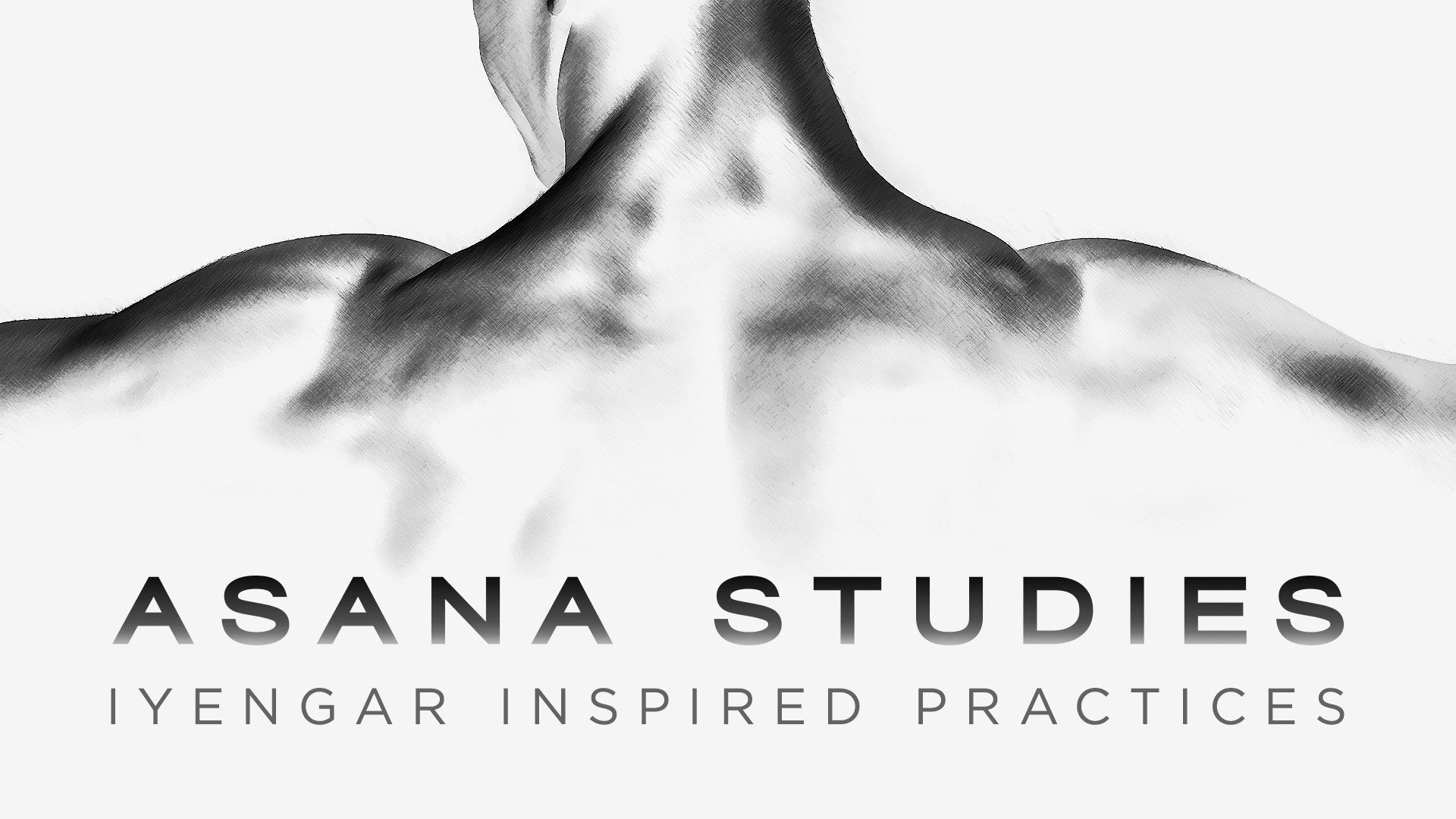
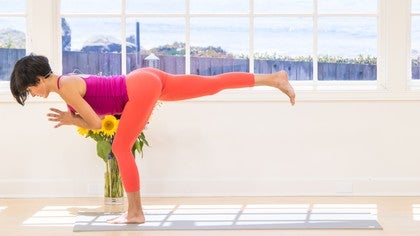

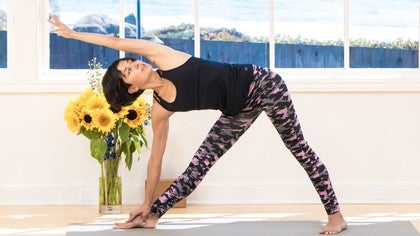









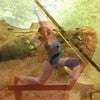
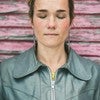
 I feel calm and strong. Thank you!
I feel calm and strong. Thank you!

